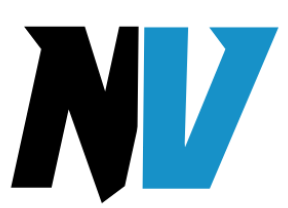Learning how to start a savings challenge to reach financial goals can be a powerful way to enhance your financial security and prepare for the future. Savings provide a cushion against unexpected expenses and help you achieve long-term financial goals. Without sufficient savings, you might face unnecessary financial stress, debt, and an unstable financial future. A solid savings plan ensures you’re ready for emergencies and can weather economic challenges.
A savings challenge offers a focused and engaging approach to building your savings. By setting specific savings targets and deadlines, it turns saving into a goal-oriented activity, tailored to your financial situation. This method makes saving more manageable and keeps you motivated and accountable as you work towards your financial objectives.
Starting a savings challenge encourages consistency and discipline, making it easier to achieve goals like building an emergency fund, saving for a large purchase, or planning for retirement. By breaking down your financial goals into smaller, actionable steps, a savings challenge simplifies the path to success. Here are the steps to start and complete a savings challenge:
1. How to start a savings challenge to reach financial goals: Setting Clear Financial Objectives
To learn how to start a savings challenge to reach financial goals, the first step is setting clear and specific financial objectives. These objectives can be broken down into short-term and long-term goals. Short-term goals, such as saving for a vacation, a new gadget, or an emergency fund, are typically achievable within a year. Long-term goals, such as saving for retirement, purchasing a home, or funding education, often span several years or even decades. Applying the SMART goal framework—Specific, Measurable, Achievable, Relevant, and Time-bound—will help make your goals clearer, more attainable, and in line with your overall financial strategy.
Next, determine the target amount for each goal. For example, if you’re saving for a house down payment, calculate the total cost, including associated fees and taxes. For long-term goals, be sure to account for inflation and other factors that may affect your savings. Factoring in these considerations ensures that your savings target is realistic and aligned with the realities of your financial situation.
Once your goals and target amounts are set, create a timeline to stay focused and on track. A shorter timeline will require larger savings contributions, while a longer timeline provides the flexibility for smaller, more consistent savings. If you have multiple objectives, prioritize them based on their urgency. For instance, building an emergency fund should likely take priority over saving for a luxury vacation. This helps ensure that your most critical financial needs are addressed first.

2. How to start a savings challenge to reach financial goals: Designing Your Savings Challenge
When learning how to start a savings challenge to reach financial goals, the first step is selecting a format that aligns with your income flow and spending habits. You can choose a weekly, monthly, or daily challenge. For instance, a weekly challenge might involve saving a fixed amount every week, while a daily challenge could be as simple as putting aside your loose change each day. Another option is deciding between incremental and fixed-amount challenges. In an incremental challenge, the amount saved increases over time, such as starting with $1 in the first week and adding an extra dollar each week. A fixed-amount challenge, however, requires saving a consistent sum regularly.
Once you’ve chosen the challenge format, it’s important to create a detailed savings plan. Review your monthly budget to determine how much you can realistically set aside for your challenge. You may need to adjust your spending by cutting back on non-essential expenses to free up more funds for saving. Tracking your progress is essential, and using budgeting apps or tools can help you stay on course. Visual aids like charts or graphs can also be motivating, allowing you to see how close you are to your goal.
To stay motivated throughout the savings challenge, set milestones and rewards. Breaking down your savings goal into smaller, manageable targets can make the process feel less overwhelming. For example, if your goal is to save $5,000 over a year, aim for quarterly milestones of $1,250. Celebrate each milestone by rewarding yourself with something small—a treat or a night out—so that you remain motivated to continue working toward your financial goals.
3. Implementing the Savings Challenge
When learning how to start a savings challenge to reach financial goals, it’s essential to put practical steps in place to ensure success. Start by automating your savings. Setting up automatic transfers from your checking account to a designated savings account ensures consistency and helps you save without thinking about it. Align these transfers with your income schedule, so a portion of each paycheck is automatically allocated to your savings goal. To further optimize your savings, consider opening a high-interest savings account or a money market account to earn more on your funds over time.
Another key element in implementing your savings challenge is cutting down on unnecessary expenses. Begin by identifying discretionary spending—the non-essential purchases that can be reduced or eliminated. This might mean dining out less, cancelling unused subscriptions, or choosing more affordable alternatives for regular services. Adopting a more frugal lifestyle can significantly boost your savings. Simple steps, such as cooking at home, buying second-hand items, and practising energy-saving habits, can make a big difference in how much you can save.
Lastly, consider finding additional sources of income to accelerate your savings progress. Engaging in side gigs or freelance work can provide extra cash that can be directed toward your savings goal. You can also declutter your home and sell unused items on platforms like eBay or Facebook Marketplace, generating additional funds. This helps you reach your financial goals faster and contributes to a simpler, more organized living space.
4. Overcoming Common Challenges
Overcoming common challenges in a savings challenge requires sustained motivation, resilience in the face of setbacks, and strategies to avoid temptations. Staying motivated is key, and one effective method is to use visualization techniques. Regularly picturing your financial goal—whether through a vision board or daily reminders—can keep you focused on the end result. Joining a support group or sharing your savings challenge with an accountability partner can offer the external incentive and encouragement you need to stick with it.
Setbacks are a natural part of any financial journey, but they don’t have to derail your progress. If you encounter a setback, take the time to reassess your goals and adjust your savings plan accordingly, rather than abandoning it altogether. Developing strategies to get back on track, such as creating a mini-challenge to make up for missed savings or temporarily increasing your savings rate, can help you regain momentum and continue toward your objectives.
Avoiding temptations is crucial for maintaining your savings discipline. One way to do this is by implementing no-spend periods, during which you refrain from spending money on non-essential items. These periods can significantly boost your savings and help you become more aware of your spending habits. Practising mindful spending is another effective strategy—before making a purchase, ask yourself whether it aligns with your financial goals. Being intentional with your spending ensures that your money is directed toward what truly matters.
5. Reviewing and Adjusting Your Plan
Regularly reviewing and adjusting your savings challenge is crucial to ensuring its success. Schedule monthly or quarterly check-ins to compare your actual savings with your planned goals and assess your progress. During these check-ins, analyze your spending patterns to identify areas where you can make adjustments to boost your savings. This ongoing review process helps keep you on track and allows you to catch any issues early on.
As your financial situation evolves, be prepared to adjust your savings challenge accordingly. You may need to increase or decrease your savings amount depending on your progress or any changes in your circumstances. For instance, if you receive a raise, consider increasing your savings rate to accelerate your progress. Conversely, if you encounter unexpected financial challenges, such as job loss or medical expenses, be flexible and modify your plan to reflect these changes, ensuring that your savings challenge remains realistic and achievable.

6. Celebrating Success and Setting New Goals
Celebrating success and setting new goals are essential steps in maintaining motivation and continuing your financial progress. Spend some time appreciating your accomplishments when you attain a major milestone or savings target. Celebrating these successes reinforces positive behaviour, making it more likely that you’ll stay motivated for future financial objectives. A small celebration, such as a special meal or a day out, can serve as a rewarding acknowledgement of your discipline and hard work.
Once you’ve achieved your savings goal, it’s important to plan for the next financial objective. Consider rolling over your momentum into a new goal, using your existing savings as a foundation for the next challenge. Continuously setting new financial goals helps maintain the savings habit you’ve developed, turning it into a long-term practice that supports your ongoing financial well-being.
Conclusion
Starting and completing a savings challenge involves several key steps. It’s critical to make a thorough plan, keep motivated, set attainable targets, and periodically assess your progress. By following these steps, you can build a solid foundation for financial success and ensure that you stay on track toward achieving your financial objectives.
If you haven’t already, think about launching your personal savings challenge right now. Remember that even small, consistent efforts can lead to significant financial gains over time. Taking action now will set you on a path to reaching your financial goals and developing a sustainable savings habit.
Finally, financial discipline and long-term planning are vital for lasting financial security. The skills and habits you develop through a savings challenge contribute to a more disciplined approach to money management. By applying these principles, you can achieve long-term financial success and enjoy greater stability and peace of mind in the future.

